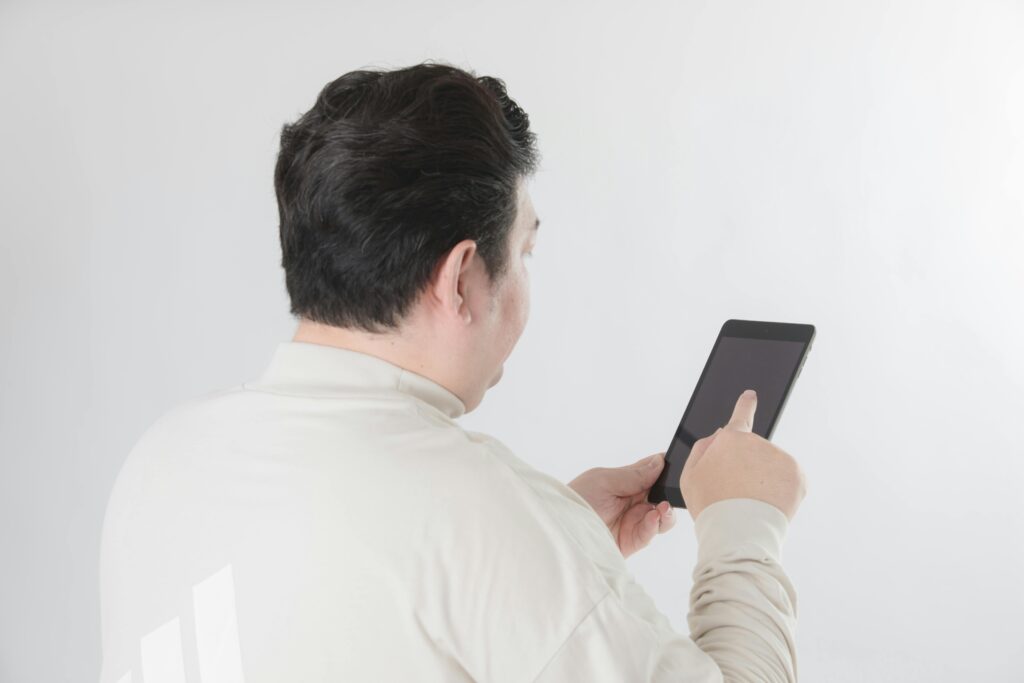Losing weight usually comes down to consistently eating fewer calories than you burn. That’s where tracking apps can make a difference, and MyFitnessPal is one of the most widely used tools for the job. It helps users log meals, monitor calories, track macros, and stay accountable day to day. But how well does it actually work when your goal is long-term weight loss? Let’s take a closer look at what the app offers, how people use it, and whether it can realistically help you meet your goals.

Why Nutrition Tracking Can Help With Weight Loss
Keeping track of what you eat is one of the most effective habits for managing weight. It turns vague guesses into clear data and that can change everything. Here’s how nutrition tracking supports weight loss:
- Improves awareness of what you’re eating: Many people underestimate portions or forget small snacks. Logging meals helps reveal the full picture of your intake.
- Helps identify eating patterns: Tracking highlights habits like late-night snacking, emotional eating, or consistently low protein intake.
- Encourages mindful choices: Knowing you’ll log that food makes you pause and consider if it’s really worth it – without guilt, just awareness.
- Reinforces consistency: Seeing your daily numbers (calories, protein, carbs, etc.) can be motivating and encourage you to stay on track.
- Reveals nutrient gaps: Apps like MyFitnessPal show macro and micronutrient breakdowns, helping you spot what your diet might be missing.
- Supports long-term behavior change: Tracking builds better habits over time, which is more sustainable than short-term diets.
- Provides clear data for adjustments: If your progress stalls, your food log can help pinpoint what to tweak whether it’s portion size, meal timing, or food choices.
In short, nutrition tracking gives you a more honest, accurate look at your diet. That clarity can be the key to making lasting progress.

MyFitnessPal Features That Support Weight Loss
MyFitnessPal is one of the most well-known apps in the weight loss space and for good reason. It combines nutrition tracking, goal setting, and progress monitoring into one platform. What makes it stand out is how it helps users build better habits over time, not just follow short-term diets. Below is a detailed breakdown of the features that support weight loss effectively:
1. Massive Food Database
- MyFitnessPal gives access to a vast range of global food items, including fresh produce, packaged foods, restaurant meals, and even recipes you create yourself.
- This variety makes it easier to log meals accurately, regardless of your eating style or location.
Why it matters for weight loss
Accurate food tracking helps eliminate guesswork and ensures you’re aware of your true calorie intake.
2. Barcode Scanner and Voice Logging
- Scan barcodes on packaged foods to log them instantly.
- Use the voice logging feature to add meals by speaking naturally (e.g. “2 scrambled eggs and toast”).
Why it matters for weight loss
These tools reduce friction and make daily tracking faster – important when consistency is the key to progress.
3. Personalized Calorie and Macro Goals
- During setup, MyFitnessPal calculates your daily calorie needs using the Mifflin-St. Jeor equation, which considers your age, weight, height, and activity level.
- You can set specific weight goals, and the app adjusts your targets accordingly.
- Premium users can customize their macronutrient ratios (carbs, protein, fat) based on dietary needs or preferences.
Why it matters for weight loss
Setting a realistic calorie deficit is the foundation of sustainable fat loss. Macro tracking also supports muscle preservation and balanced eating.
4. Visual Progress Tracking
- MyFitnessPal provides charts for weight, calorie intake, macro distribution, and more.
- Users can see daily, weekly, or monthly trends in nutrition and body weight.
Why it matters for weight loss
Tracking progress over time helps identify plateaus, spot wins, and stay motivated even when the scale moves slowly.
5. Logging Water, Weight, and Other Metrics
- In addition to food, you can log water intake, body measurements, and exercise, with sleep tracking available through integration with compatible apps like Apple Health or Fitbit.
- Syncing with wearables like Fitbit or Garmin allows automatic step and workout logging.
Why it matters for weight loss
Weight loss isn’t just about food – hydration, activity, and consistency all play a role. Tracking these factors gives you a more complete picture.
6. Macro and Micronutrient Breakdown
- The app shows not only calories but also detailed nutrition info, such as fiber, sugar, vitamins, and minerals.
- This helps users focus on nutritional quality, not just quantity.
Why it matters for weight loss
Staying full, avoiding energy crashes, and maintaining muscle mass often come down to proper nutrient balance, not just fewer calories.
7. Meal Planning and Premium Features
- Premium users gain access to custom meal plans, intermittent fasting tools, and food analysis features.
- Plans are flexible and tailored to user goals, whether weight loss, muscle gain, or maintenance.
Why it matters for weight loss
Planning ahead prevents impulse eating and supports consistency especially when paired with data-backed feedback.
8. Integration with 35+ Fitness Apps and Devices
- MyFitnessPal works with Apple Health, Google Fit, Strava, Samsung Health, Fitbit, Garmin, and others.
- This allows you to automatically sync workouts, steps, and sleep data into the app.
Why it matters for weight loss
When all your health data is in one place, it’s easier to make informed decisions and adjust your habits based on what’s actually happening, not assumptions.

Is MyFitnessPal Enough on Its Own?
MyFitnessPal offers a wide range of tools that can support weight loss especially for those who want to track calories, understand their nutrition, and monitor progress over time. It’s well-suited for users who are self-motivated and prefer a structured approach to managing their food and activity levels.
At the same time, it’s helpful to recognize that every user’s journey is different, and what works for one person may not be the ideal fit for another. MyFitnessPal focuses primarily on data tracking calories, macros, exercise, weight which is a strong foundation, but there are a few areas where additional tools or support can enhance the experience:
- Long-term success often includes behavior and lifestyle adjustments: While MyFitnessPal helps you stay aware of what you eat, pairing it with healthy routines like regular meal planning, exercise, or sleep tracking can lead to more sustainable results.
- Some users may want support beyond tracking: The app doesn’t replace professional advice. People with specific dietary needs or health conditions may benefit from additional guidance from a dietitian or health coach.
- Daily logging may not suit everyone long term: MyFitnessPal makes food logging as simple as possible, but some people prefer tools that focus more on meal inspiration, prep, and routine-building instead of daily data input.

ReciMe: A Smart Alternative for Food and Calorie Management
For anyone monitoring their diet or paying attention to calories, convenience is just as important as accuracy. Tracking calories helps build awareness around how food impacts energy levels, progress, and habits. But entering every ingredient manually can quickly become time-consuming.
At ReciMe, we’ve designed a solution that simplifies the process. The app automatically extracts calorie and nutrition data from saved recipes, allowing users to understand the nutritional value of their meals without the need for manual input.
ReciMe is an all-in-one platform for saving recipes, planning meals, and organizing grocery lists. Recipes can be saved from social media or even notes. Ingredient lists are automatically detected, giving users a clear view of what’s in their food.
Key Features:
- Calorie and Macronutrient Breakdown: Each saved recipe includes calories, protein, fat, and carbohydrates, helping you stay mindful of your nutritional intake.
- Meal Planner: A built-in weekly planner makes it easy to organize meals in advance, save time, and stick to a more structured eating routine.
- Smart Grocery Lists: Automatically generated shopping lists are grouped by category, based on selected recipes – making grocery trips faster and more efficient.
- Cross-Platform Access: ReciMe is available on iOS, Android, the web, and as a Chrome extension – so your recipes are always within reach.
We built ReciMe for those who want to stay organized, eat intentionally, and save time without the hassle of constant manual tracking. If you’re looking for a way to manage meals and keep an eye on calories in a more practical, food-first way, ReciMe is a smart, flexible option.
Just try it – you’ll love it:


How Calorie Tracking Fits Into a Sustainable Health Routine
Calorie tracking, when used thoughtfully, can be a valuable part of building long-term healthy habits. Rather than focusing on restriction or chasing fast results, it helps create awareness of what, how much, and how often you’re eating. This kind of insight allows for more informed decisions around food and nutrition, without relying on guesswork or trends.
When integrated into a broader routine that includes balanced meals, regular movement, hydration, and adequate rest, tracking becomes a supportive tool not a strict set of rules. It helps reveal patterns over time, making it easier to adjust portion sizes, meal timing, or food choices based on actual needs. For many, this approach encourages consistency and balance rather than short-term extremes.
Ultimately, calorie tracking works best when it’s used to build understanding and support better habits not control them. It can be part of a sustainable lifestyle when paired with flexibility, patience, and a focus on overall well-being.
Conclusion
MyFitnessPal provides a solid framework for tracking food intake, understanding nutritional habits, and staying accountable over time. With its large food database, macro tracking, and integration with fitness devices, the app supports users who want a structured, data-driven approach to managing their weight.
That said, long-term results depend on more than just logging calories. Sustainable weight loss involves behavior change, planning, and consistency. When used consistently and realistically, MyFitnessPal can be a helpful part of a larger routine aimed at building better habits and maintaining overall health.
FAQ
1. Does MyFitnessPal really help with weight loss?
Yes, for many users it helps by increasing awareness of calorie intake, encouraging accountability, and providing detailed feedback. However, its effectiveness depends on how consistently it’s used.
2. Is the app free to use?
Yes, MyFitnessPal has a free version with access to basic food and activity tracking. A Premium version is also available with additional tools like custom macro goals, intermittent fasting, and advanced insights.
3. How accurate is the calorie information in MyFitnessPal?
The app uses one of the largest food databases, but user-generated entries may vary in accuracy. Cross-checking nutrition labels and selecting verified items can improve reliability.
4. Do I need to track every meal to see results?
Not necessarily. Some users benefit from full daily tracking, while others use it more flexibly such as during weekdays, for certain meals, or when progress stalls.
5. Can MyFitnessPal be used for goals other than weight loss?
Yes. Many use it for weight maintenance, muscle gain, or simply to become more aware of their nutrition. The app supports various health and fitness goals.
6. Is MyFitnessPal suitable for beginners?
Generally, yes. The interface is user-friendly, and setup is simple. It may take a few days to get used to logging, but most users adapt quickly with regular use.
